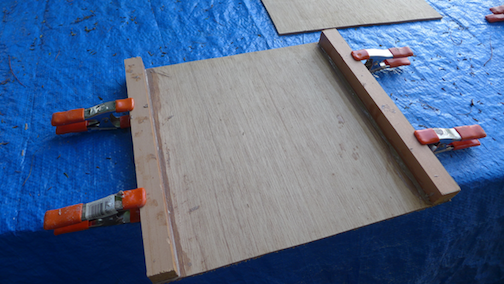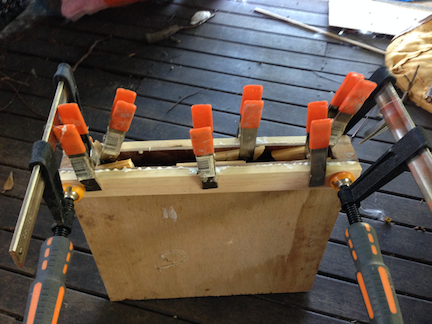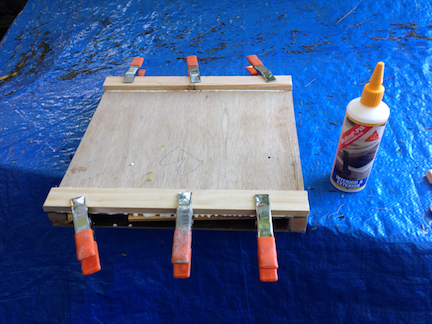Daggerboard case assembly
Our daggerboards and cases use the design from the OZRacer Mk 2 plans. The case sides, then, are 4mm thick plywood rectangles 352mm front-to-back and about 340mm top-to-bottom. The spacers are cut from cedar to be 25mm x 25mm in cross-section. Once the materials were cut, I laid everything out on one of the upside-down hulls.

Assembly was pretty simple - I glued the spacers to one side panel first:

Next, the side panels and inside edges of the spacers were given three thin coats of epoxy, wet-on-wet. Finally, I glued on the second side panel. To this point, all the pieces were glued together using thickened epoxy.
I switched to a PVA glue for the final step, which was to attach the chine logs that will provide the gluing surfaces that attach this case to the hull’s bottom panel and the underside of the deck. Benefits of PVA: it doesn’t aggravate my eczema the way epoxy does, it’s about equally strong, it’s less expensive, doesn’t require mixing, and is easier to clean. I don’t want to fight in the Glue Wars, but I anticipate using PVA for any remaining glue jobs where I know I don’t need epoxy’s gap-filling ability.


And here’s the finished product!
